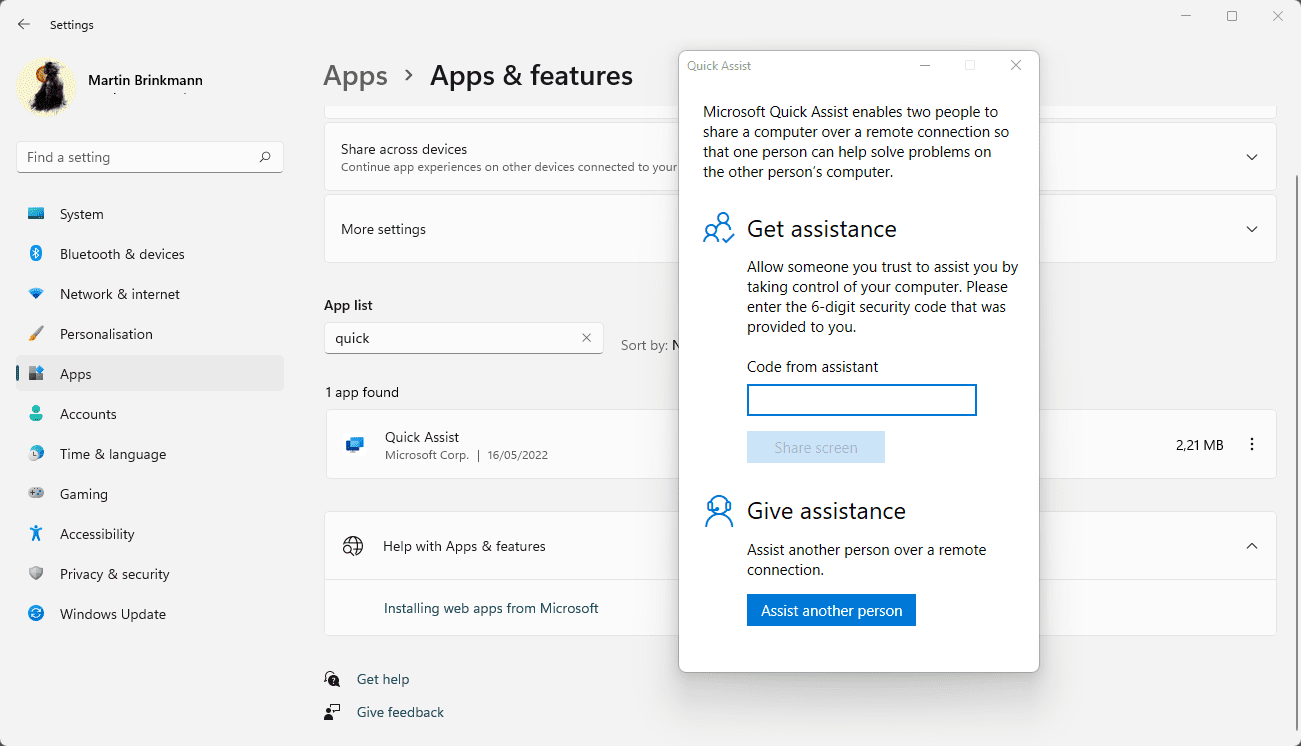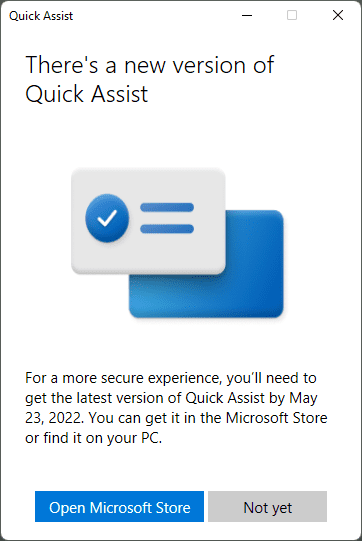Quick Assist is a remote assistance application that is part of Microsoft's Windows 10 and 11 operating systems. Up until now, Quick Assist was available to all users to get remote assistance, e.g., to resolve issues that users experience while working on Windows machines.

Users may launch the interface by searching for Quick Assist or by using the keyboard shortcut Ctrl+Win+Q; the new app supports the keyboard shortcut just like the old version of Quick Assist.
Starting on May 23, 2022, that version of Quick Assist will stop functioning. Announced on April 27, 2022, Microsoft informed Windows Insiders about the upcoming changes to Quick Assist. The company delayed the change by a week, which was originally scheduled to take place on May 16, 2022.
The announcement explains how the new version of Quick Assist can be installed, but it does not highlight the challenges that administrators face.
The old version of Quick Assist can't be used anymore after May 23, 2022 according to Microsoft.

Users receive a prompt that a new version is available, and that it needs to be downloaded and installed from the Microsoft Store. The "not yet" option will be removed from the application window. It loads the Quick Assist interface when selected.
The change introduces several usability issues for administrators and users alike, which Microsoft failed to mention in the announcement.
Administrators who replied to the official Twitter announcement by Microsoft's Office Insider account highlighted, that the installation of the application required administrative privileges, and that the user that required assistance, needed to install the new Quick Assist app from the Store to get help using the tool.
Previously, administrators could be sure that Quick Assist was available if the device used Windows 10 or 11 as the operating system. The change may require support to walk each user through the installation of the new Quick Assist application before it can be used to provide remote assistance.
Additionally, the new Quick Assist installs next to the old Quick Assist application on the Windows machine, making it difficult for users to pick the right one during searches or selecting the right one for uninstallation.
At least the last issue appears to have been fixed. Installation of the new version appears to remove the old version from the device. A search lists the newly installed application only and the apps listing in the Settings application lists it as the sole app as well.
Microsoft explains the reason behind the change
Kapil Tundwal, the engineering manager for the Quick Assist application explained on Twitter that the Microsoft Store version enables Microsoft to send security updates faster to the userbase.
Regarding the Microsoft Store requirement, Microsoft notes that it is possible to distribute the offline app version of Quick Assist. Administrators pointed out, that this won't work in all environments.
Closing Words
Microsoft's decision to replace the native Quick Assist application with a Store version has caught many administrators off guard. Microsoft could have replaced the original version with the new version gradually, by integrating the new version in new Windows releases. It could also have kept the old version functional for the time being to give organizations time to adjust to the change.
Now You: have you used Quick Assist in the past? (via Bleeping Computer)
Thank you for being a Ghacks reader. The post Microsoft's replaces bundled Quick Assist app with Microsoft Store version appeared first on gHacks Technology News.
0 Commentaires